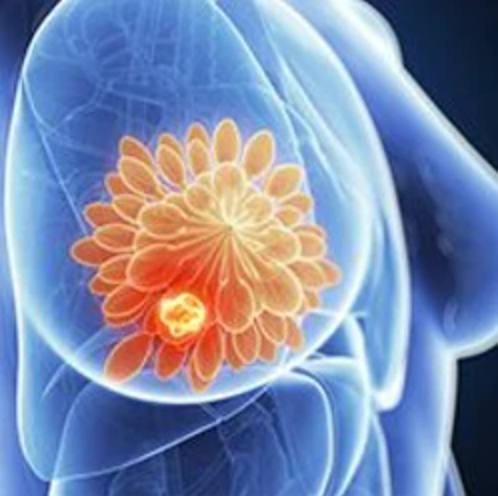Commentary
Article
Lower Neighborhood Opportunity Is Linked With Increased Stress, Risk of All-Cause Mortality in Breast Cancer
Author(s):
Samilia Obeng-Gyasi, MD, MPH, highlights a study on the association between neighborhood opportunity with all-cause mortality in patients with breast cancer.
Samilia Obeng-Gyasi, MD, MPH

Samilia Obeng-Gyasi, MD, MPH, a surgical oncologist, an assistant professor in the Division of Surgical Oncology at The Ohio State University (OSU), and a member of the Cancer Control Program at OSU Comprehensive Cancer Center (OSUCC) – James, discussed findings from a retrospective study on the association between neighborhood opportunity with all-cause mortality in patients with breast cancer in an interview with OncLive®.
In the interview, Obeng-Gyasi expanded on the research, which investigated the association between neighborhood opportunity, allostatic load, and all-cause mortality in patients with stage I to III breast cancer treated at OSUCC – James and how these findings could inform strategies to improve care for underserved patient populations.
Previously, Obeng-Gyasi provided further insights into the impact of social determinants of health and barriers to marginalized communities in breast cancer care.
OncLive: Could you expand on this study that explored the link between neighborhood opportunity allostatic load and breast cancer outcomes in patients?
Obeng-Gyasi: This was a retrospective study where we looked at patients who were treated at the OSUCC–James Stefanie Spielman Comprehensive Breast Center who had a diagnosis of breast cancer. We looked at patients [treated] from 2012 to 2020 who had stage I to III disease. What we wanted to understand was if there was a relationship between neighborhood contextual factors, a biological measure of stress—which is Allostatic load—and cancer outcomes, such as mortality.
How was the study designed?
We used an index called the Ohio Opportunity Index, which was created by some of my colleagues here at Ohio State. It's an index that looks at different components of the neighborhood. It specifically looks at things like neighborhood-level transportation, education, employment, health, housing, crime, and environment. It's a multifaceted index that tries to understand which neighborhoods have more opportunity [for access to care] than others. A neighborhood that has more opportunities is resource rich. Neighborhood that are more resource rich will tend to have different opportunities vs neighborhoods that are resource poor.
What findings were derived from this study?
Individuals who lived in communities that were resource poor were more likely to have higher levels of biological stress, [meaning higher] allostatic load. These patients were more likely to have a higher overall mortality compared with individuals who lived in areas that were more resource rich. These findings were consistent with other studies that have shown that individuals who live in neighborhoods with high deprivation—meaning that they have low access to resources—tend to have more aggressive forms of breast cancer, are more likely to die from their breast cancer, and have overall poor outcomes.
In this study, looking at neighborhood opportunity, we showed the same thing. Individuals who live in areas with a lower opportunity index were more likely to have chronic stress and also more likely to die from their cancer.
How do you hope that these findings will affect care at your own institution? How do you foresee that being implemented?
Studies like this reinforce the decision for us to collect social determinants of health. To truly treat a patient, you must think about them holistically. It's not just diagnosing somebody; giving them medication or doing surgery; and then sending them home. You have to understand the world they live in and the resources they have to fully participate in their care.
Understanding neighborhood, contextual, and individual factors helps you have a more holistic view of the patient, which will also result in better outcomes for patients. The fact that we're collecting the social determinants of health is going to be instrumental in identifying deficits or needs that people may have. We are a resource-rich facility [at OSUCC – James] where we have navigators and social workers who can work with patients to help them get the resources that they need.
We have to view patients more holistically and look at them beyond their diagnosis. [It is important] to try to understand the world that they live in and its implications for how they got the disease they have, how that disease will work, how they will be able to participate in their care, and how they respond to our treatments. [That all] has implications for them down the road in terms of how long they may live.
Reference
Chen JC, Elsaid MI, Handley D, et al. Association between neighborhood opportunity, allostatic load, and all-cause mortality in patients with breast cancer. J Clin Oncol. Published online February 16, 2024. doi:10.1200/JCO.23.00907









